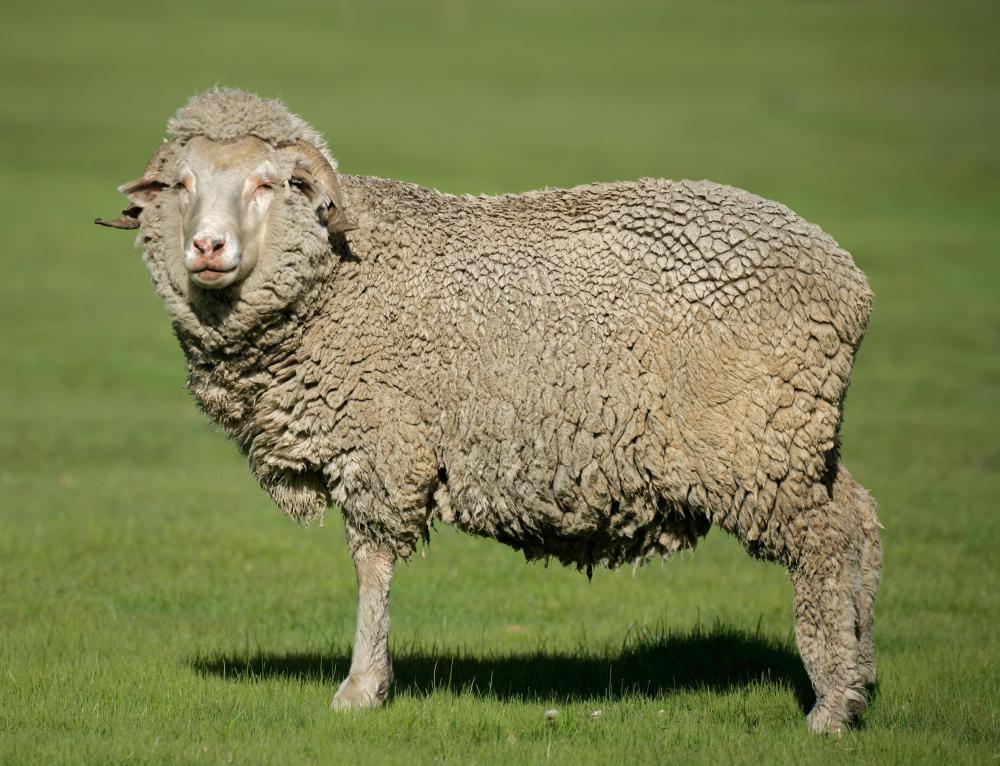At HomeQuestionsAnswered, we're committed to delivering accurate, trustworthy information. Our expert-authored content is rigorously fact-checked and sourced from credible authorities. Discover how we uphold the highest standards in providing you with reliable knowledge.
What is the Process of Turning Wool into Fabric?
The process of turning wool into fabric has several critical steps which have been refined in the course of centuries of wool production. Whether automated or performed entirely by hand, wool production must include shearing, sorting, combing, carding, and spinning before the wool can be turned into fabric. One may want to consider the amount of work involved to make wool into fabric the next time a wool sweater or set of slacks seems shockingly expensive.
The first step in the production of wool fabric is the raising of sheep. Sheep are sheared annually for their dense coats of crimped, elastic hair known as wool. When sheep are sheared, very sharp blades are run close to their skin, with the goal of removing the coat of wool all in one go. Occasionally, the sheep are washed before shearing to pull out some of the natural lanolin in their wool and to remove large pieces of debris.

After shearing, the wool is divided into sections and graded by quality, with wool of the same quality being processed together to create textiles ranging from supersoft merino to coarse wools for overcoats. This is an important step in the process of turning wool into fabric, as poor-quality wool mixed in with high-quality wool can bring the value down considerably. The sorting process is followed by combing, in which the wool is combed to pull the fibers into alignment and to remove chunks of material which may be caught in it.

Combed wool must then be carded, run through very fine wire brushes to line the fibers up, pull out short segments, and create rovings, strands of wool in which all of the fibers face the direction. Finished rovings can be spun into thread or yarn for weaving, crocheting, or knitting. The width of the finished thread depends on how it is handled during spinning, rather than whether or not it is performed by machine. Skilled hand-spinners can make perfectly even and extremely fine wool thread, for example, and machines can be set to spin large, chunky yarns by demand.

Wool has some interesting properties which must be considered when converting wool into fabric. The first is that wool is highly subject to shrinkage and felting, caused when the scales on the surface of each individual wool hair loosen in response to heat and moisture and then interlock. Once wool has shrunk or felted, it cannot be coaxed into expanding to its former size, and it can be further felted with the introduction of more heat and moisture. In some cases, felting is desired when turning wool into fabric, to create an especially dense, watertight fabric which can be used in inclement climates.

Wool is also naturally water-resistant, thanks to the lanolin present, although water-resistance can be reduced by treating wool with a heavy alkali to pull out the lanolin. Removal of lanolin makes wool more rough and coarse, but it also removes the slightly greasy texture associated with minimally processed wool.
AS FEATURED ON:
AS FEATURED ON:
















Discussion Comments
City people don't know anything about farm work.
it is quite interesting about wool. -Sweta
Wool is carded first and then combed. This difference is found in woolens vs. worsteds. You mixed up the procedures.
Post your comments